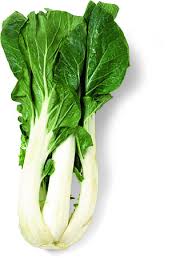
Thanks for your help.
My journey to not being a typical American


 Not long ago, SIGG announced that their aluminum water bottles, which many people purchased to avoid the BPA found in plastic bottles, actually contained BPA. Now it has come out that Gaiam's aluminum water bottles -- the ones that were previously labeled "BPA-free" -- actually leach BPA at 20 times the levels that SIGG bottles did.
Not long ago, SIGG announced that their aluminum water bottles, which many people purchased to avoid the BPA found in plastic bottles, actually contained BPA. Now it has come out that Gaiam's aluminum water bottles -- the ones that were previously labeled "BPA-free" -- actually leach BPA at 20 times the levels that SIGG bottles did.
After being called out on the web on the BPA status of their "BPA-free" water bottles, Gaiam has quietly posted on its retail website data from independent lab test results that show BPA leaching levels at 23.8 parts per billion.
These findings are more than 10 times the detection limit that SIGG provided in its own water bottle testing, and over 18 times more than the leaching levels found in independent studies of SIGG water bottles.
Dr. Mercola's Comments: |
I’m sure you’ve heard a lot about Bisphenol-A, or BPA, if you’ve paid attention during the past year. It’s been getting a lot of press for good reason.
BPA is an estrogen-mimicking chemical, invented nearly 120 years ago, that is used to make hard plastics and epoxy resins. It can be found in numerous products that most people use on a daily basis, including baby bottles, canned foods, water bottles, and microwaveable plastic dishes and containers.
The Environmental Working Group has published an interesting review of BPA, showing the timeline of BPA’s use over the years. It offers a glimpse of the reality behind nearly all chemical dangers, showing just how long it can take to get something dangerous off the market, despite the evidence of harm.
Industry uses more than 6 billion pounds of BPA a year. As a result, scientists have found that 95 percent of people tested have dangerous levels of BPA in their bodies.
This is one valid reason why you should not tolerate the suggestion that “trace amounts” of toxins are okay.
The cumulative effect of being exposed to minuscule amounts of BPA from cans, bottles, plates and all other sources over the years can eventually spell serious trouble for your health.
The biggest victims are likely to be children, who may be exposed to the chemical from the time they’re in utero, and onward, throughout their entire lives.
Why You Need to Pay Attention to BPA
In the last ten years, some 700 studies have been published about BPA -- most of them indicating serious health hazards, at least in animals. The most troubling problem with BPA is that it mimics the female hormone estrogen.
Your body is extremely sensitive to sex hormones, and miniscule amounts can induce profound changes. Therefore, scientists are afraid even low levels of BPA could have a negative impact on human health.
In animals, BPA increases aneuploidy, a defect consisting of abnormal loss or gain of chromosomes, which in humans could possibly lead to miscarriages or disorders such as Down Syndrome.
Moreover, there is evidence (among mice and rats) that even low doses of BPA can cause:
Increased fat formation
Abnormal sexual behavior
Disrupted reproductive cycles
Structural damage to your brain
In September 2008 the National Toxicology Program of NIH determined that BPA may pose risks to human development, raising concerns for early puberty, prostate effects, breast cancer, and behavioral impacts from early-life exposures, all of which you can read about in the NIH publication No. 08-5994.
It also shows that nearly all of the exposure is through the food supply, which emphasizes the importance of avoiding BPA-laced food and beverage containers of all kinds as this is how your food becomes contaminated.
It’s difficult to understand why U.S. health and environmental regulators keep insisting there is “no evidence of harm to human health after 50 years of use,” when this list contains some of the most wide spread health issues that have dramatically increased in that same time frame.
Lawmakers are Slow to Protect the Public
There has been some success in limiting the use of BPA. In May of this year, Minnesota legislature passed a statewide ban on the sale of baby bottles, sippy cups, and other children’s food containers made with BPA. Other states, including California, Connecticut, Michigan and New York, are considering similar legislation.
Some retailers have also made the wise decision to respond to consumer demand and have voluntarily eliminated some of their BPA products for sale.
It’s a good start, but clearly not enough. Hopefully, Congress will come through with their proposed legislation intended to establish a federal ban on BPA in all food and beverage containers.
Until then, it may be prudent to remain wary of companies who claim to be completely safe, while hiding the fact that their metal water bottles still contain trace elements of BPA in the lining.
Better yet, quit trying to figure out who’s honest and who’s not, and go for food and beverage containers you KNOW does not contain BPA -- namely GLASS.
That way you can circumvent the entire problem with BPA, which is that it doesn’t remain stable or inert in the plastic.BPA leeches into whatever food or beverage you put in a plastic container, canned good, or plastic baby bottle. And if you microwave the containers or bottles, or place hot liquids or food into them, BPA is released 55 times more rapidly!
With glass you simply will not have this problem and can finally put your mind at rest.
Also keep in mind that your body IS capable of detoxing and cleaning out at least some of the toxins you’re exposed to on a daily basis as long as you maintain a healthy lifestyle and take measures to limit your exposure to toxins.
Do You Know What the Recycling Symbols Mean?
If you absolutely can’t do away with your plastic containers, at least check the recycling label on the bottom of the container and opt for “the lesser evil.”
Avoid containers with recycling label No. 7, as these varieties usually contain BPA.
No. 3 (DEHA) and No. 6 (Styrene) are also considered unsuitable for use with food due to their toxic ingredients.
Containers marked with the recycling labels No. 1, No. 2, No. 4, and No. 5 do not contain BPA, but they do contain other unsavory chemicals that are best avoided. Still, if you’re determined to stick with plastic, these four are considered to be better than the others.
The Institute for Agriculture and Trade Policy’s Smart Plastics Guide offers more detailed descriptions of the most commonly occurring chemicals in plastic products.
The website Mother Jones also offers a handy chart that you can cut out and stick on your refrigerator.
10 Tips to Reduce Your Exposure to BPA
Only use glass baby bottles and dishes for your baby
Give your baby natural fabric toys instead of plastic ones
Store your food and beverages in glass -- NOT plastic -- containers
IF you choose to use a microwave, don’t microwave food in a plastic container
Stop buying and consuming canned foods and drinks
Avoid using plastic wrap (and never microwave anything covered in it)
Get rid of your plastic dishes and cups, and replace them with glass varieties
If you opt to use plastic kitchenware, at least get rid of the older, scratched-up varieties, avoid putting them in the dishwasher, and don’t wash them with harsh detergents, as these things can cause more chemicals to leach into your food
Avoid using bottled water; filter your own using a reverse osmosis filter instead
Before allowing a dental sealant to be applied to you, or your children’s, teeth, ask your dentist to verify that it does not contain BPA
Where to Find BPA-Free Products
Just like some retailers are ditching hazardous products, some are also increasingly marketing products that are BPA-free. Here’s an assortment of sources that carry BPA-free products:
SafeMama.com offers a quick reference list of BPA-free sippy cups and other food storage items
They also have a cheat sheet of BPA, PVC and phthalate-free pacifiers and teething rings
TheSoftLanding.com offers glass baby bottles wrapped in silicone to prevent breakage, as well as an assortment of other BPA-free children’s products
The Z Recommends blog also has a guide that lists children‘s feeding products that don‘t contain BPA
Amazon.com‘s BPA-free section lists water bottles, baby bottles, and sippy cups.
Rubbermaid has an assortment of containers that do not contain BPA.
Nalgene now offers BPA-free water bottles.
Brita, which makes water filtration products, says that its pitchers and filters don‘t contain BPA.
SC Johnson, which makes Saran brand wraps and Ziploc bags and containers, says that it doesn‘t use BPA in its products.
 A Tomato has four chambers and is red... The heart has four chambers and is red. All of the research shows tomatoes are loaded with lycopine and are indeed pure heart and blood food.
A Tomato has four chambers and is red... The heart has four chambers and is red. All of the research shows tomatoes are loaded with lycopine and are indeed pure heart and blood food.  Celery,
Celery,  Bok Choy,
Bok Choy,  Rhubarb, and many more look just like bones. These foods specifically target bone strength. Bones are 23% sodium and these foods are 23% sodium. If you don't have enough sodium in your diet, the body pulls it from the bones, thus making them weak. These foods replenish the skeletal needs of the body.
Rhubarb, and many more look just like bones. These foods specifically target bone strength. Bones are 23% sodium and these foods are 23% sodium. If you don't have enough sodium in your diet, the body pulls it from the bones, thus making them weak. These foods replenish the skeletal needs of the body. 